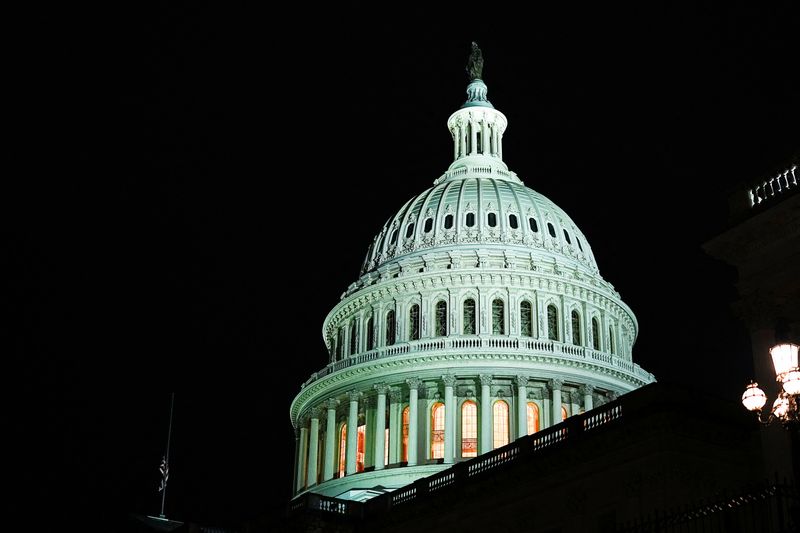WASHINGTON (Reuters) -A deal to end the longest government shutdown in U.S. history has cleared an initial hurdle in the Senate, but Congress has more work to do before sending it on to President Donald Trump to sign into law.
Here is a summary of the package:
TEMPORARILY RESTORES GOVERNMENT FUNDING
The bill would restore government funding that Congress allowed to expire on October 1, funding agency operations at existing levels through January 30. This would buy time for lawmakers to finish work on detailed spending legislation to fund agencies for the current fiscal year, which lasts through September 30, 2026.
PROVIDES FULL-YEAR FUNDING FOR SOME AGENCIES
The package also includes full-year funding for the Department of Agriculture, the Food and Drug Administration, the Department of Veterans Affairs, military construction projects and Congress itself.
Congress still must write, debate and pass full-year spending bills that cover other government agencies.
BLOCKS FEDERAL JOB CUTS
The bill would hinder Trump’s campaign to downsize the U.S. government by barring his administration from carrying out mass firings of federal workers until January 30. Roughly 300,000 of the 2.2 million people who work for the federal government have been laid off or pressured to leave their jobs this year.
It also explicitly says that the thousands of employees Trump tried to lay off after the shutdown began would keep their jobs.
DOES NOT BOLSTER EXISTING SPENDING AUTHORITY
Other than the language on job cuts, the bill includes no new guardrails that would prevent Trump from unilaterally cutting or withholding funds approved by Congress.
PAYS WORKERS
The bill provides back pay for those federal workers Trump tried to fire, as well as some state workers who were furloughed when their pay was disrupted by the shutdown.
It does not specifically address other federal workers, who are guaranteed back pay when the government reopens under a 2019 law.
PREVENTS MILITARY SPENDING INCREASES
The deal prevents the Pentagon from starting new weapons production or other programs that were not explicitly funded last year.
PROVIDES TARGETED SPENDING INCREASES
The bill boosts security spending for Congress, the Supreme Court and the U.S. court system by $88 million, responding to an increase in political violence. It also boosts spending for the Indian Health Service by $80 million.
REIMBURSES STATES
The bill reimburses states that used their own funding to cover lapsed federal funding during the shutdown, and requires that they be reimbursed if Congress allows another shutdown later in the fiscal year.
(Reporting by Andy Sullivan and Courtney Rozen; editing by Scott Malone and Alistair Bell)

